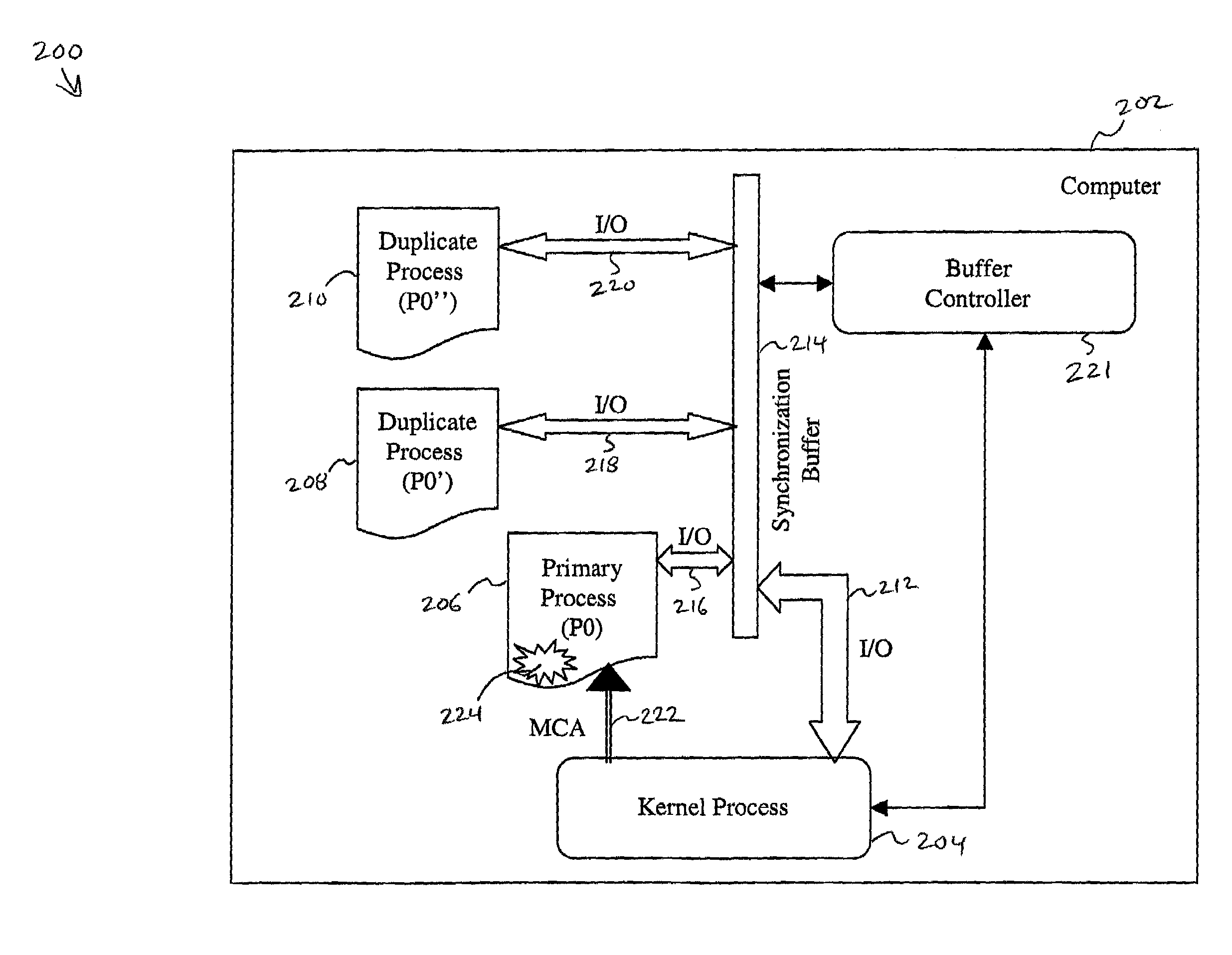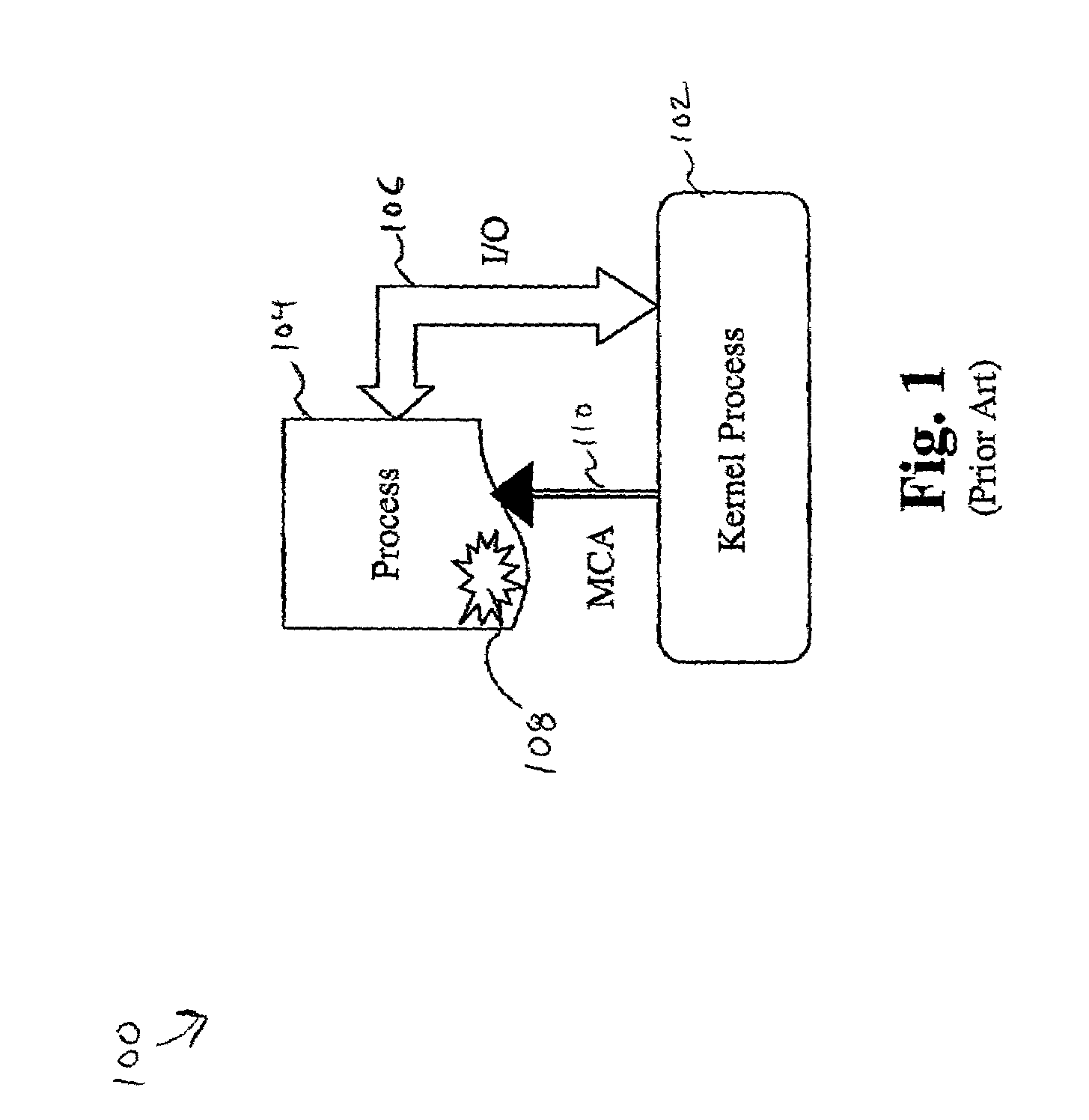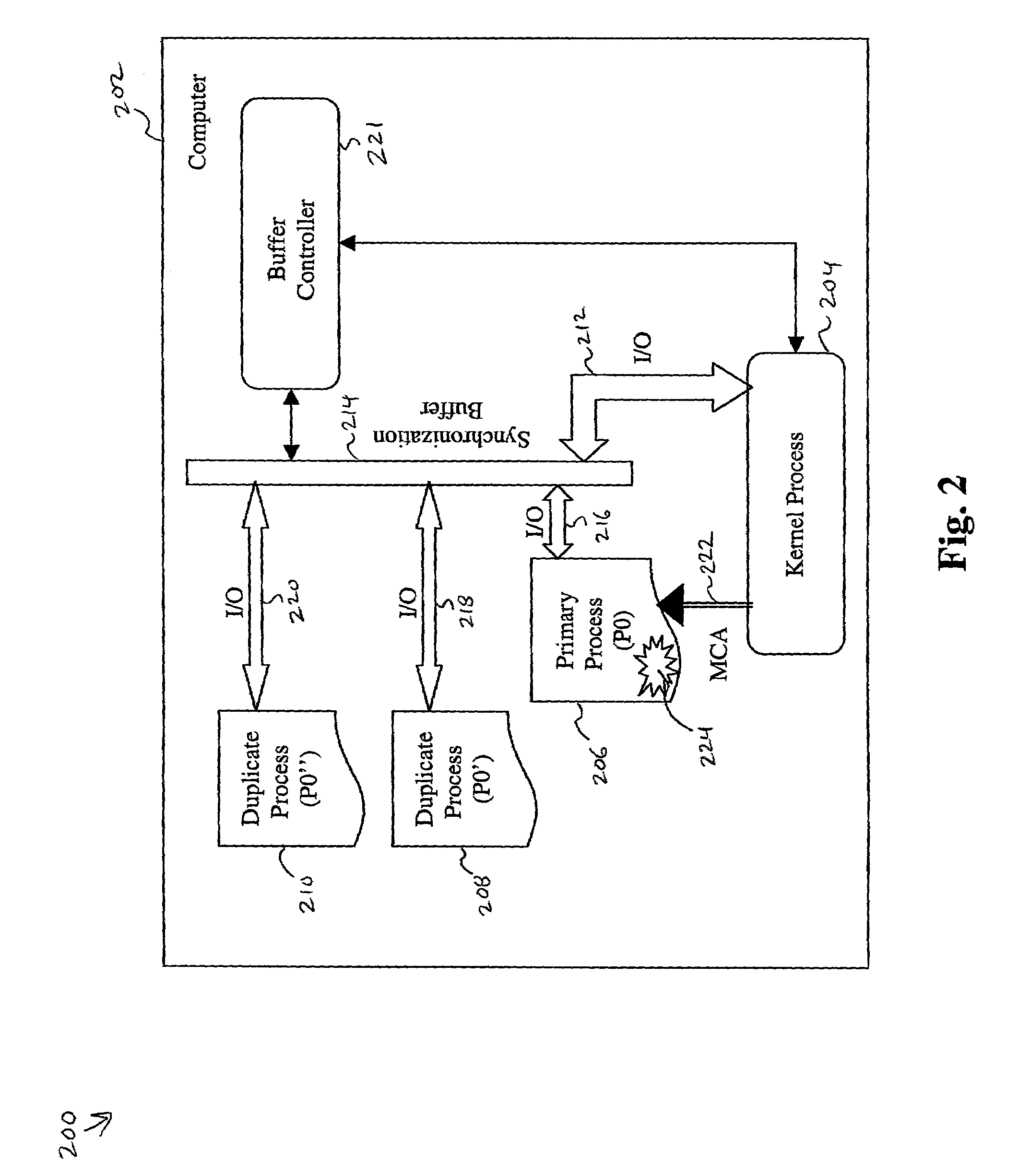System and method for memory failure recovery using lockstep processes
a memory failure and lockstep technology, applied in error prevention, digital transmission, instruments, etc., can solve the problems of dwindling memory hardware errors, hard errors, soft errors, design errors, etc., and the repair techniques of design and hard errors are almost always fatal, and the dwindling portion of memory hardware errors is occupied by design and hard errors
- Summary
- Abstract
- Description
- Claims
- Application Information
AI Technical Summary
Benefits of technology
Problems solved by technology
Method used
Image
Examples
Embodiment Construction
[0025]FIG. 2 is a data-flow diagram of a first embodiment of a system 200 for lock-step process memory failure recovery within a computer 202. FIG. 3 is a fault-tolerance level data structure 300 for dynamically specifying a fault-tolerance level for primary computer processes 302 operating within the computer 202. FIGS. 4A & 4B together are a method 400 for lock-step process memory failure recovery. FIGS. 2, 3 and 4 are discussed together.
[0026]The computer 202 is under control of an Operating System (OS), which includes a kernel process 204. The computer 202 also hosts a large number of processes (not shown) which provide services to the operating system, application programs, computer utilities, and almost all other computer functionality.
[0027]The method 400 begins in step 402 the OS associates a fault tolerance variable with each process within a set of primary processes operable within the computer 202. The set of primary processes includes those processes which are currently ...
PUM
 Login to View More
Login to View More Abstract
Description
Claims
Application Information
 Login to View More
Login to View More - R&D
- Intellectual Property
- Life Sciences
- Materials
- Tech Scout
- Unparalleled Data Quality
- Higher Quality Content
- 60% Fewer Hallucinations
Browse by: Latest US Patents, China's latest patents, Technical Efficacy Thesaurus, Application Domain, Technology Topic, Popular Technical Reports.
© 2025 PatSnap. All rights reserved.Legal|Privacy policy|Modern Slavery Act Transparency Statement|Sitemap|About US| Contact US: help@patsnap.com



